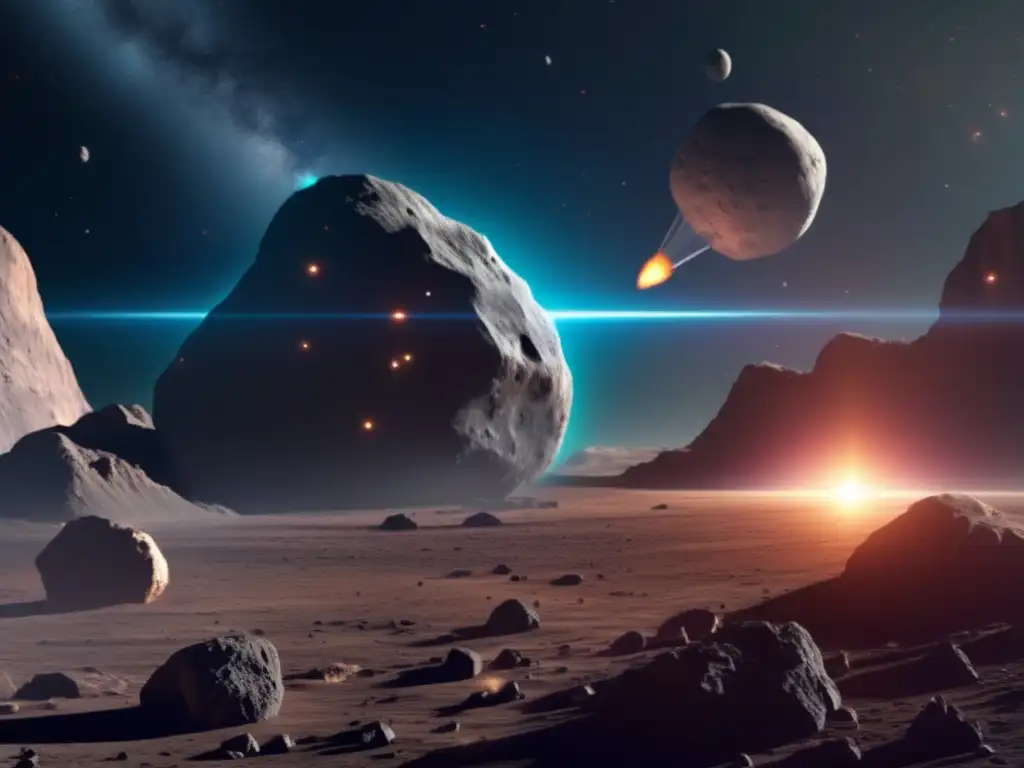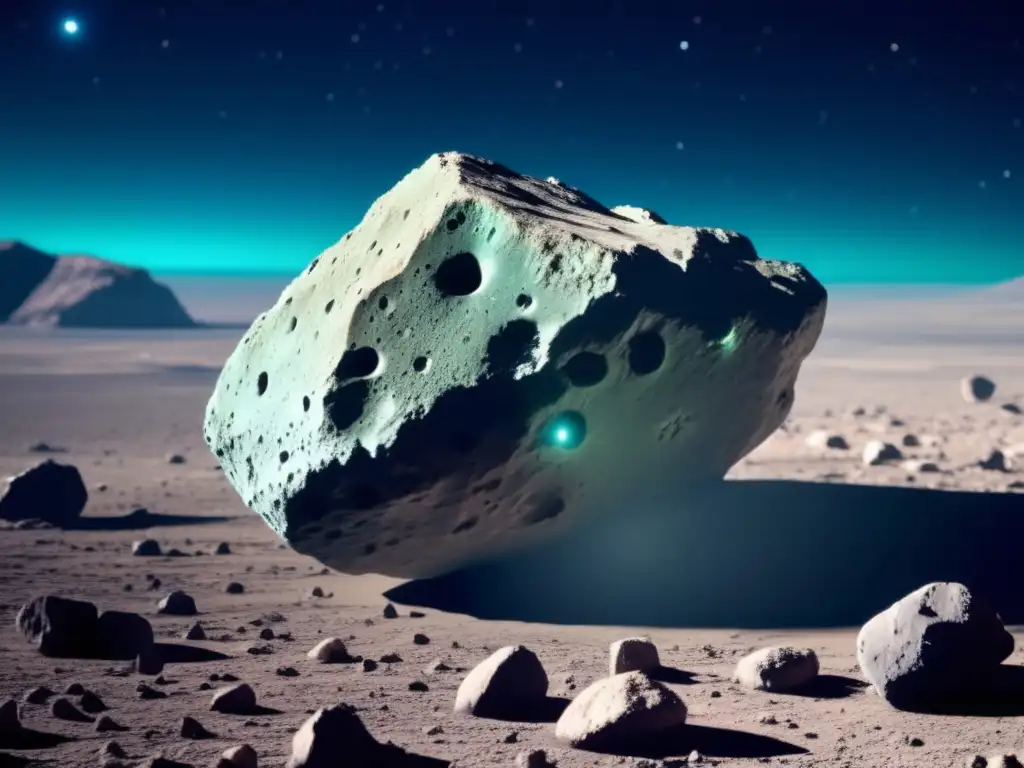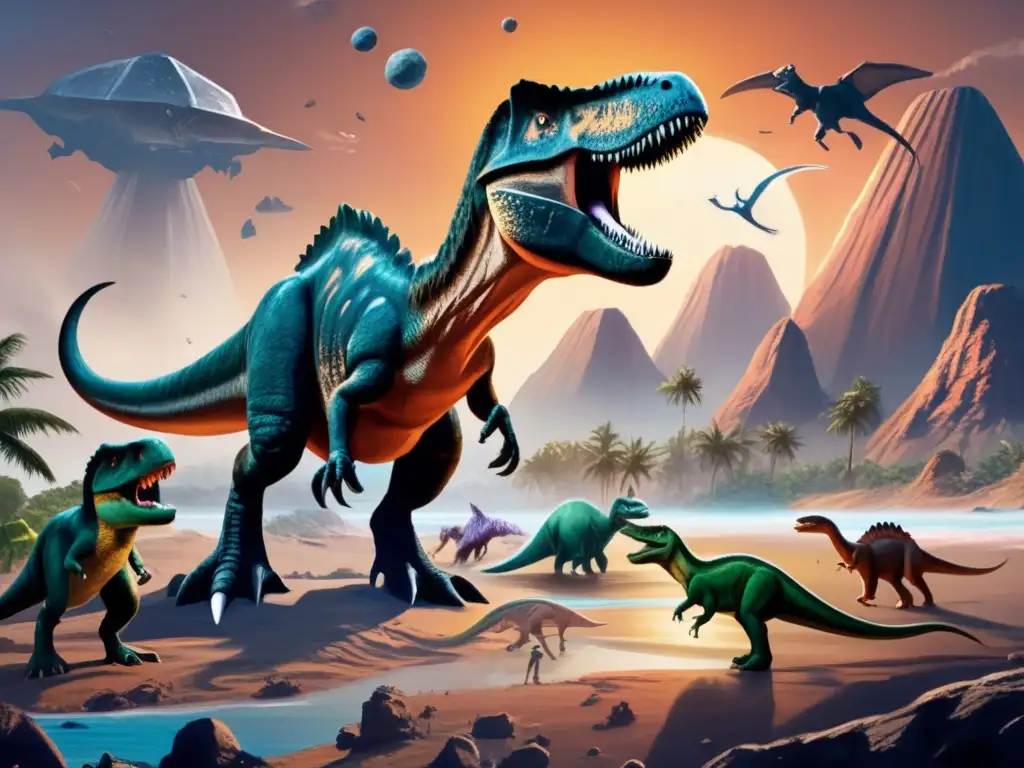Asteroids: The Killers From The Cosmos That Ended Dinosaurs

Introduction
Asteroids are celestial objects that have fascinated scientists and space enthusiasts for centuries. These rocky and metallic bodies orbit the sun, and some of them come very close to Earth. While many asteroids pose no threat, some are killers that could potentially destroy life as we know it. The most famous example of this is the asteroid impact that ended the reign of the dinosaurs 66 million years ago. In this article, we will explore how asteroids caused the extinction of these majestic animals and what we can learn from it.
Asteroid Impacts and Extinction Events

The Chicxulub Crater
The Chicxulub Crater is a massive impact crater located in Mexico's Yucatan Peninsula. It was formed by an asteroid impact that occurred 66 million years ago. The asteroid was estimated to be about 10 km in diameter and hit Earth at a speed of about 40,000 miles per hour. The impact released an enormous amount of energy, equivalent to billions of nuclear bombs. The shock wave triggered seismic waves that were felt around the world, causing massive earthquakes and volcanic eruptions. The impact also ejected vast amounts of dust and debris into the atmosphere, blocking out the sun's rays, and causing global cooling and darkness.
The Extinction of Dinosaurs
The impact of the asteroid that created the Chicxulub Crater caused widespread devastation and marked the end of the Cretaceous Period. The dinosaurs, which had dominated life on Earth for over 150 million years, were wiped out. It is estimated that more than 75% of all plant and animal species on Earth became extinct in the aftermath of the impact. The impact caused a chain reaction of environmental changes that lasted for thousands of years and led to the rise of new species, including mammals and birds.
The Danger of Asteroids
The Chicxulub impact is a stark reminder of the potential danger that asteroids pose to life on Earth. While most asteroids are harmless, some are large enough to cause global devastation if they hit our planet. Scientists believe that the asteroid that ended the reign of the dinosaurs was 10 km in diameter, but there are asteroids out there that are much larger. For this reason, NASA and other space agencies around the world are working to detect and track potentially hazardous asteroids and to develop technologies that could deflect them if necessary.
The Future of Asteroid Defense

Space-Based Telescopes
One of the primary ways that scientists detect and track potentially hazardous asteroids is through space-based telescopes. These telescopes are more effective than ground-based systems because they can observe the sky continuously without interference from the Earth's atmosphere. The Hubble Space Telescope and the upcoming James Webb Space Telescope are two examples of space-based telescopes that could be used to detect and track asteroids.
Planetary Defense Missions
Another way that space agencies are working to defend against asteroids is through planetary defense missions. These missions involve sending spacecraft to intercept and study asteroids to better understand their composition and behavior. The hope is that by studying these objects, scientists can develop technologies and strategies to deflect or destroy them if necessary.
Deflection Technologies
There are several technologies that could be used to deflect asteroids if they pose a threat to Earth. One method is to use a spacecraft to collide with an asteroid, changing its trajectory slightly. Another approach is to use a gravitational tractor, which would use the spacecraft's gravity to gently pull the asteroid out of its path. Nuclear explosions have also been proposed as a last-resort option.
Frequently Asked Questions

-
Is there an asteroid that could hit Earth soon?
While there are no known asteroids that pose an immediate threat to Earth, there are many that could potentially collide with our planet in the future. This is why it is important to detect and track potentially hazardous asteroids and to develop technologies to deflect them if necessary.
-
How often do asteroids hit Earth?
Asteroid impacts are relatively rare events. However, they have occurred throughout Earth's history, and smaller objects, like meteoroids, hit our planet more frequently.
-
Can we prevent an asteroid impact?
While we cannot prevent an asteroid impact, we can take steps to minimize the damage caused by such an event. This includes detecting and tracking potentially hazardous asteroids, developing deflection technologies, and preparing emergency plans for the aftermath of an impact.
-
How do scientists study asteroids?
Scientists study asteroids using a variety of methods, including telescopic observations, remote sensing, and planetary defense missions.
-
What can we learn from studying asteroids?
Studying asteroids can help us better understand the origins of the solar system and the formation of planets. It can also give us insights into the potential hazards they pose to Earth and how we can protect ourselves from them.
Conclusion
Asteroids have played a significant role in shaping the history of our planet. The impact that ended the reign of the dinosaurs is just one example of their potential danger and power. While we cannot prevent an asteroid impact, we can take steps to detect and track them and to develop technologies to deflect or destroy them if necessary. By studying asteroids, we can learn more about our origins and the potential threats we face from the cosmos.
Thank you for reading this article on www.asteroidrealm.com. We encourage you to share your thoughts in the comments section and to participate positively with our website by subscribing, sharing the article on social networks, or other forms of engagement. If you want to delve deeper into the topic of asteroids, you can find additional resources below.
Additional Resources

 Dinosaurs Vs Asteroids: A Tale Of Survival And Extinction
Dinosaurs Vs Asteroids: A Tale Of Survival And Extinction Unraveling The Extinction Event: Asteroids Vs Dinosaurs
Unraveling The Extinction Event: Asteroids Vs Dinosaurs Fall Of The Dinosaurs: The Cataclysmic Asteroid Event
Fall Of The Dinosaurs: The Cataclysmic Asteroid EventIf you want to discover more articles similar to Asteroids: The Killers From The Cosmos That Ended Dinosaurs, you can visit the Asteroids and Dinosaurs category.
Leave a Reply

Articulos relacionados: